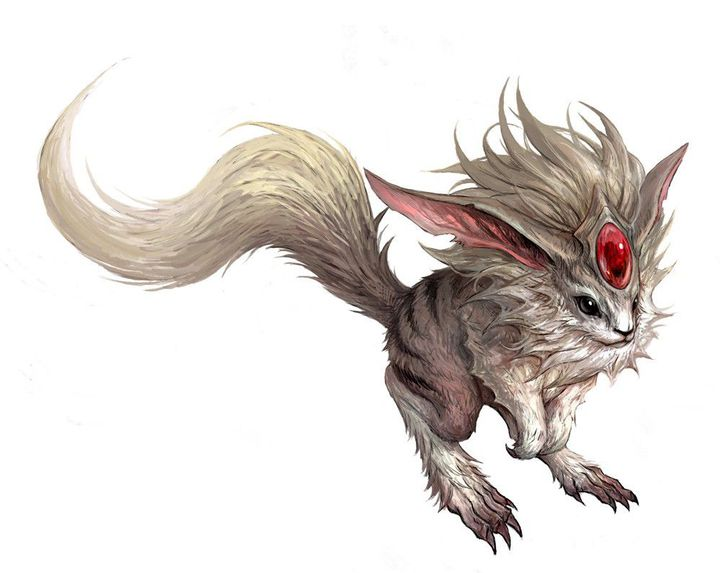
The carbuncle is considered a small rodent or feline-like creature with fluffy ears from South American legend. These creatures are heavily associated with precious metals and gemstones. In fact, legend states that they have gems embedded in their foreheads.

The creature’s name is derived from an archaic word for red garnets – which was derived from the Latin carbunculus, meaning “little coal.”
A similar creature by the same name was described as living in the mountains of the Philippines, depicted as a large, venomous snake with a glowing gem on its forehead. However, most of the reports were from the Spanish conquistadors exploring South America in the 16th century.
While descriptions of these creatures can vary widely, stories agree the animals are small with a reflective gem set in the foreheads. Most often the gems are described ad red and flow like fire. Carbuncles also commonly have a hood that can be used to cover the gems when necessary.
Generally, these animals are considered nocturnal and herbivorous making their homes in Paraguay, Argentina, and Chile. At night they come out of hiding to search for food and water. It is here that they can be observed due to the bright glow of their gems.
So what inspired these creatures?

One candidate for the carbuncle creature is the pink fairy armadillo. It isn’t too much of a leap to imagine how the pink epidermal plates on the body could have been mistaken for gems. These animals are solitary and live in the desert of central Argentina.
Pink fairy armadillos have small eyes, yellowish-white fur, and a flexible dorsal shell with 24 bands. In addition, it has a spatula-shaped tale. These animals are very small, only reaching 5 inches and weighing 4 oz. This is the smallest living species of armadillo known.
Pink fairy armadillos are nocturnal and primarily eating insects, worms, and plants. These animals have no external ears available and are adapted to a subterranean lifestyle. They are quick burrowers and are sometimes nicknamed ‘sand-swimmers.’

The carbuncle was given its name b the Spanish who used a term for red gemstones to describe the species. These reddish armadillos would fall under the description of a red gem for those unfamiliar with these strange creatures, especially if they were found partially rolled.
Today, the Pink fairy armadillo is endangered. It is currently threatened by habitat destruction and predation by domesticated dogs. Researchers have found this creature is highly subject to stress, making attempts to apply conservation policies – including taking it out of its natural environment – extremely difficult and unsuccessful. For this reason, you won’t find any in zoos as they only survive for a few days in captivity. Conservation of this species has been relegated to several protected areas including Lihué Calel National Park.
Sources:
Carbuncle. Offbeat Folklore Wiki. (n.d.). Retrieved April 9, 2023, from https://offbeat.fandom.com/wiki/Carbuncle
Delsuc, F., Superina, M., Tilak, M.-K., Douzery, E. J. P., & Hassanin, A. (2012). Molecular phylogenetics unveils the ancient evolutionary origins of the enigmatic fairy armadillos. Molecular Phylogenetics and Evolution, 62(2), 673–680. https://doi.org/10.1016/j.ympev.2011.11.008
Dionysos. (2015, April 8). FFFMM: The carbuncle. Final Fantasy Forums. Retrieved April 9, 2023, from https://www.finalfantasyforums.net/threads/fffmm-the-carbuncle.61276/
Montecino Aguirre, Sonia (2015). “Carbunclo”. Mitos de Chile: Enciclopedia de seres, apariciones y encantos. Catalonia. p. 130.
Stalberg, A. (2020, June 23). Final fantasy: 10 awesome things you didn’t know about carbuncle. Game Rant. Retrieved April 9, 2023, from https://gamerant.com/final-fantasy-awesome-facts-carbuncle/#they-are-based-on-a-real-mythical-creature
Superina, M. (2011). Husbandry of a pink fairy armadillo (chlamyphorus truncatus): Case study of a cryptic and little known species in captivity. Zoo Biology, 30(2), 225–231. https://doi.org/10.1002/zoo.20334